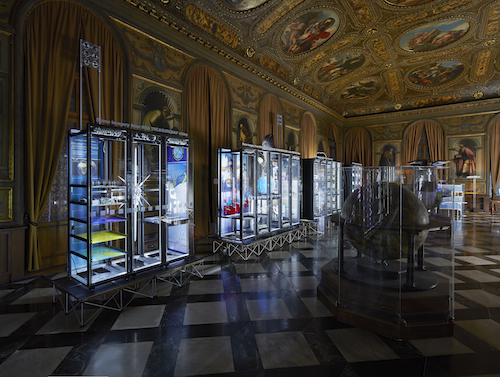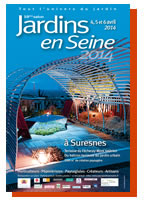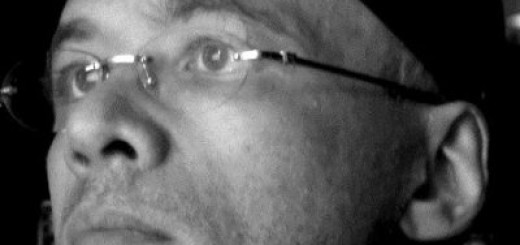SECRET POWER
| SEE YOU VERY SOON IN VENICE! | |||||||||||||||||||||||||||||||
| EVENTS DURING THE PROFESSIONAL DAYS
OF THE 56TH INTERNATIONAL ART EXHIBITION OF LA BIENNALE DI VENEZIA |
|||||||||||||||||||||||||||||||
|
|||||||||||||||||||||||||||||||
|
||||||||||||||||||||
|
||||||||||||||||||||
 |
||||||||||||||||||||
|
||||||||||||||||||||
|
||||||||||||||||||||
| SIMON DENNY’S SECRET POWER POSITIONS THE VISUAL CULTURE OF INTELLIGENCE COMMUNITIES ALONGSIDE ARTISTIC MASTERWORKS | ||||||||||||||||||||
| In Secret Power artist Simon Denny draws upon the historic weight of Venice to offer an unprecedented perspective on the visual culture of the Five Eyes intelligence alliance (between the United States, the United Kingdom, Canada, Australia and New Zealand), as revealed in documents leaked by NSA contractor Edward Snowden in 2013. | ||||||||||||||||||||
|
“Simon Denny’s project has an urgent relevancy to our contemporary world,” says Commissioner Heather Galbraith. “He zeros in on complex aspects of our visual culture where the dynamics of influence and ownership are ripe for exploration. The exhibition sites allow Secret Power to draw together imagery from the 16th and 21st centuries in relationships that question its role within state- commissioned projects, and how it relates to expressions of nationhood or authority.” |
||||||||||||||||||||
| She says, “These interests sit well with the themes of this year’s Biennale, expressed in Okwui Enwezor’s All the Worlds’ Futures.” | ||||||||||||||||||||
| Secret Power is installed in the Biblioteca Nazionale Marciana and Marco Polo Airport. In the Marciana Library, Denny has repurposed operational server racks of the kind used in data collection facilities as exhibition vitrines. Here he has placed sculptural interpretations of visuals used by elite intelligence agencies to represent operations and communicate complex programs. The exhibits stand amidst maps and paintings commissioned by historical state powers to represent powerful data. Such visualizations, including maps based on geographical surveys and intelligence reports by travellers such as Marco Polo, were crucial to Venice’s dominance as a commercial and political power. | ||||||||||||||||||||
| In the airport a series of plaques, profiling historical maps and mapmakers from the Marciana’s collection, extends into international territory, greeting travelers as they pass through security into the city. Recreations of the library’s richly painted ceilings span the airport’s floor, offering a unique chance to consider at close hand the allegorical symbolism and iconography within these works, which were state-commissioned in the mid-1500’s to represent the value of knowledge and express the power and authority of Venice. | ||||||||||||||||||||
| Denny says, “While today intelligence gathering relies largely on the collection of abstracted data from digital networked communications, contemporary state powers continue to task skilled artists and designers with making data accessible and actionable.” As a case study, he presents interpretations of work found on the public-facing Behance and LinkedIn profiles of former NSA creative director David Darchicourt. | ||||||||||||||||||||
|
By positioning the work of designers like Darchicourt alongside the maps and iconography surveyed in the airport installation—now more commonly regarded as art historical masterpieces than as symbols or tools of power—Denny tacitly suggests that such contemporary works could be understood in the same light. The server vitrines installed in the library connect Darchicourt with a tradition that includes Ptolemy, Fra Mauro, Titian, and Tintoretto—masters tasked to represent foreign territories and celebrate the value of knowledge and information. |
||||||||||||||||||||
| “In the Snowden slides and the Darchicourt designs, there are depictions of maps, magicians, and soldiers that draw on fantasy culture, military history, and internet meme culture,” he says. “For me, they resonate in an amazing way with the allegorical paintings in the Marciana, which also use fantastic symbols for complex ideas. In both, images of weapons, soldiers, and philosophers stand in for the importance of the military, duty, and knowledge. In both, there are swords, battles, and bearded wise men. It’s amazing how connected these two visual languages can feel, side by side.” | ||||||||||||||||||||
| “While Darchicourt cannot be linked conclusively to any of the documents leaked by Snowden, the works displayed on his public Behance portfolio bear striking visual resemblance to content found in the Snowden slides. In considering Darchicourt, a viewer is presented with a uniquely human perspective from which to begin unpacking this clandestine visual world,” says Denny. | ||||||||||||||||||||
| Galbraith says, “Along with other designs, Secret Power includes a large map of New Zealand that Denny commissioned from Darchicourt without reference to its use in the exhibition—an act that hints at the complexities of gathering and presenting intelligence.” | ||||||||||||||||||||
| The exhibition takes its name from Secret Power – New Zealand’s Role in the International Spy Network, a 1996 book by investigative journalist Nicky Hager. The book presented the public with its first look at the GCSB (Government Communications Security Bureau), New Zealand’s most elite intelligence bureau. Denny’s Secret Power includes a 184 page publication of the same title which contextualises the exhibition by presenting a wealth of materials gathered in the course of production, as well as a number of essays and interviews that begin to interpret the subject matter, and offer a range of readings of Denny’s practice. | ||||||||||||||||||||
| Denny’s work often involves probing information-dense segments of contemporary culture, typically relating to technology and business. | ||||||||||||||||||||
|
He says, “In the wake of the Snowden leaks there has been a lot of analysis and explanation of what these agencies do. There is also value in approaching their practices through the visual, from a primarily cultural perspective—offering new insights into the values and workings of these powerful bureaucracies, and also reminding us of how the workings of power can be beautiful.” |
||||||||||||||||||||
| He says, “In the wake of the Snowden leaks there has been a lot of analysis and explanation of what these agencies do. There is also value in approaching their practices through the visual, from a primarily cultural perspective—offering new insights into the values and workings of these powerful bureaucracies, and also reminding us of how the workings of power can be beautiful.” | ||||||||||||||||||||
| NOTES TO EDITORSNew Zealand Pavilion at the 56th International Art Exhibition of la Biennale di VeneziaVenues
Biblioteca Nazionale Marciana Marco Polo Airport New Zealand at Venice Website: Simon Denny Denny has been included in shows in major European and international art museums, including the ICA, London; Kunsthaus Bregenz; KW Center for Contemporary Art, Berlin; Fridericianum, Kassel, Centre Pompidou, Paris, the Ullens Centre for Contemporary Art in Beijing and the Aspen Art Museum. In 2013, he presented All You Need Is Data: The DLD 2012 Conference Redux at Kunstverein Munich, Petzel Gallery, New York and Hamburger Bahnhof, Berlin (as one of four nominees for the 2013 Preis der Nationalgalerie für Junge Kunst). In 2013, he exhibited The Personal Effects of Kim Dotcom at MUMOK, Vienna, and, in 2014, at Firstsite, Colchester and the Adam Art Gallery, Wellington. In 2014 Denny presented New Management at the Portikus, Frankfurt. He was included in the 2008 Sydney Biennale and the 2008 Brussels Biennial. In 2012, Simon Denny won the Baloise Art Prize at Art Basel. He has been the only New Zealand artist invited to exhibit in the curated show at la Biennale Arte di Venezia, which he did in 2013 and was shortlisted for the 2014 and 2012 Walters Prize in New Zealand. From 3 April to 31 August 2015, MoMA PS1 in New York presents The Innovator’s Dilemma, the first museum exhibition to survey a number of the artist’s recent projects and the first large-scale US museum solo show of Simon Denny. The exhibition will adopt the architectural typology of an industry tradeshow, staging literal platforms for content drawn from various recent bodies of the artist’s work. Simon Denny’s work has been extensively written about and reviewed including in the New York Times, Focus, Frieze, Art Forum, Modern Painters, Monopol, Mousse andSüddeutsche Zeitung. Catalogue
Simon Denny Gallery Representation Press Images Press Contacts Europe UK and USA New Zealand and Australia |
||||||||||||||||||||
 |
||||||||||||||||||||
|
The initiative is also generously supported by the NZ at Venice Patrons, Galerie Buchholz, Michael Lett, Petzel Gallery, T293, Arounder.com/Vrway communication, Save S.p.A Group (Marco Polo Airport), and from Liv Barrett, Lonti Ebers, Danny and Lisa Goldberg, Friedrich Petzel, Jackson Tang, and other private donors. |
||||||||||||||||||||













